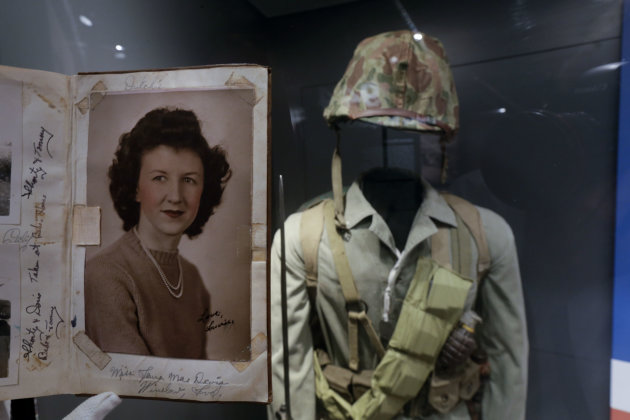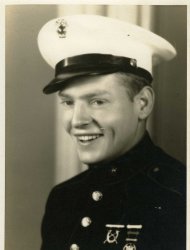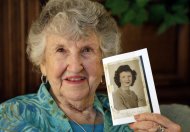 Before Cpl. Thomas "Cotton" Jones was killed by a Japanese sniper in the South Pacific in 1944, he wrote what he called his "last life request" to anyone who might find his diary: Please give it to Laura Mae Davis, the girl he loved.
Before Cpl. Thomas "Cotton" Jones was killed by a Japanese sniper in the South Pacific in 1944, he wrote what he called his "last life request" to anyone who might find his diary: Please give it to Laura Mae Davis, the girl he loved.
Davis did get to read the diary — but not until nearly 70 years later, when she saw it in a display case at the National World War II Museum.
"I didn't have any idea there was a diary in there," said the 90-year-old Mooresville, Ind., woman. She said it brought tears to her eyes.
Laura Mae Davis Burlingame — she married an Army Air Corps man in 1945 — had gone to the New Orleans museum on April 24 looking for a display commemorating the young Marine who had been her high-school sweetheart.
"I figured I'd see pictures of him and the fellows he'd served with and articles about where he served," she said.She was stunned to find the diary of the 22-year-old machine gunner.
Curator Eric Rivet (rih-VET) let her take a closer look, using white gloves to protect the old papers from skin oils. It was the first time in his 17 years of museum work that someone found "themselves mentioned in an artifact in the museum," Rivet said


The diary was a gift to Jones from Davis. They had met in the class of '41 at Winslow High School. "He was a basketball player and I was a cheerleader," she said.
Jones had given her his class ring but they weren't engaged, she said. They had dated through high school. They went to the prom together.
He made his first diary entry while a private at Camp Elliott in San Diego, a little less than a year before he was killed. He described it as "my life history of my days in the U.S. Marine Corps ... And most of all my love for Laura Mae for whom my heart is completely filled. So if you all get a chance please return it to her. I (am) writing this as my last life request."
A sniper's bullet between the eyes killed Jones on Sept. 17, 1944, the third day of the U.S. assault on the Pacific island of Peleliu (PEL-uh-loo), in Palau.Peleliu was where U.S. forces learned the Japanese had changed their island defense tactics. Instead of concentrating units on the beaches and finishing with reckless banzai charges, the Japanese holed up in bunkers, trenches, pillboxes and caves — many of them blasted into the island's hills and mountains — that had to be taken one at a time.










0 Comments